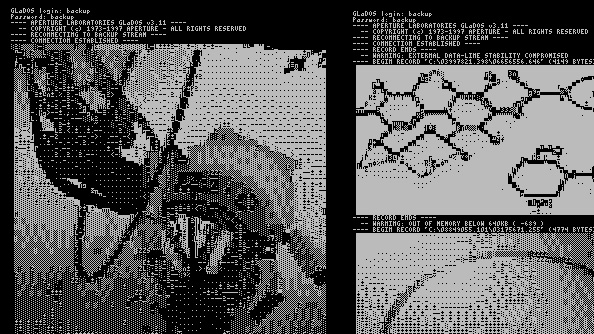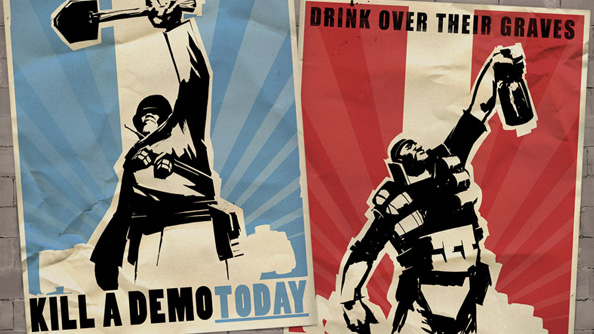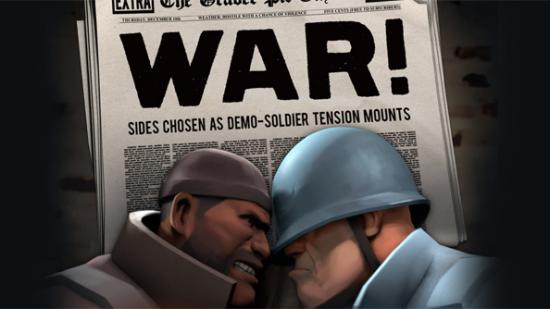In a wide ranging talk at the Develop conference, Valve’s Jason Holtman explained some of the thinking behind Valve’s most creative decisions; how responsibility for announcing and promoting their games sat with the developers themselves, rather than being farmed off to a separate PR and marketing department.
Hello. You’re reading the Team Fortresschannel at PCGamesN. We’re a new site that combines original journalism, user submissions and the best headlines from across the web. Feel free to comment or follow us on our Team FortressTwitter feed for regular updates.
Jason explained Valve’s thinking as “business is really about getting the content you make out in the world. Business is not defined by skills like Finance, Press Relations, Marketing, Legal or the Business Development. They’re skills, but they’re not the business of business.” As Jason put it. “We are not a finance industry, or marketing industry. We are an entertainment industry.”
Jason then went on to give concrete examples of how Valve used its the creativity of its development teams to produce brilliant announcement campaigns.
The first example was the announcement of Portal 2. Within the team that announced Portal 2, Jason explained that not a single one had any of the classic business skills you’d associate with a major announcement. In fact, all Valve did to begin with was post a patch update to the original Portal which, simply, “changed radio transmission frequency to comply with federal and state spectrum management regulations.” That was posted to a forum, where the forumites discovered a set of radios had been added to Portal. In turn, those radios spat out static which, when decoded, revealed pictures. Those pictures led to a phone number – and eventually to an altered ending of Portal 1 that confirmed the existence of Portal 2. 
The result was levels of engagement that were simply astonishing: the forum thread where the community gathered to decode the messages resulted in 2.7 million views, with over 120,000 gamers contributing. The new ending also received over half a million Youtube views. It was viral in the least horrible sense of the word.
Jason explained the value of the approach: “we have to be able to make this announcement fun. This couldn’t have been done if people sat around doing this in a traditional business sense. This approach makes things better.”
The second example Jason gave was the announcement of updates for Team Fortress 2, which he admitted was a difficult business problem given how much that game had evolved so radically since it first shipped as part of The Orange Box.”We figured out it’s not a multiplayer game, but a hat-manufacturing game. So now we’ve figured that out, what do we do now?How do we keep up with content production?”
Of the 300 people working at Valve, only between six and eight are working onTF2 content. “The team would sit there andsays ‘I’ve made this awesome Demoman and Soldier stuff’. Now in the past we would have justshipped it, but the TF2 team said ‘that’s not enough’. They wanted to announce it and make it fun.” That left Valve with the problem of making TF2 updates more interesting -the solution to whichwas the WAR! campaign.
The WAR! campaign pitted the Soldier and Demoman classes against one another in a race to amass the largest number of kills before the war’s end. The class with the most kills got their update first. All the while, the TF2 team were penning some creative blog posts, including those offictional, infamousTeam Fortress survival-playboySaxton Hale.”If these blog posts hadn’t been done by the team, they would’ve sucked,” Jason claims.”It would’ve have worked as there is too much of an abstraction layer. They were happening within a half hour of things happening in the game.”
“We also had customer involvement. We opened it up to customers and said ‘hey, wouldn’t it be fun if you made propaganda posters for us?’ We were sentthousands of funny posters, classic war posters. Customers were having fun being a part of the business, and doing a much beter job than we could. A better job than a marketing team could do for us. These posters are even better than ones the TF2 team could’ve created for us.”
Makes sense. Why farm out marketing to a team of suits when your most loyal fans are falling over themselves to provide you with material? Valve’s knack for mindfulcrowdsourcing has most recentlyinspired the launch of the community-powered indie-approval platformSteamGreenlight.
